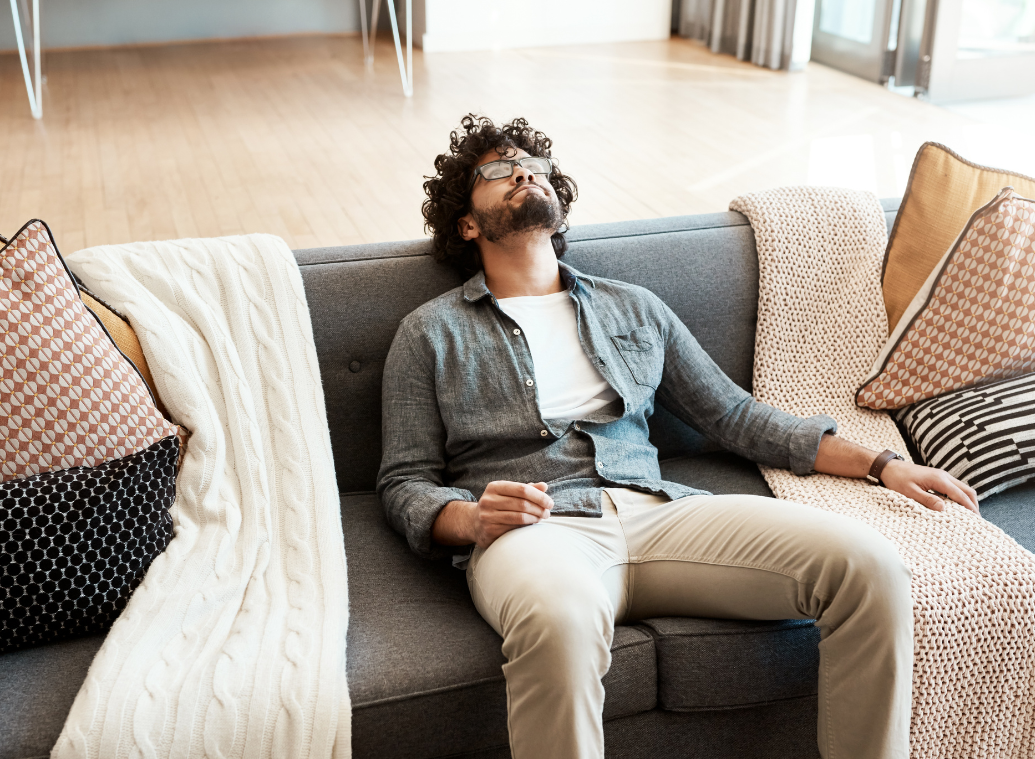- Home
- Share
- Forum
- General forums
- Research and useful tips - Multiple Sclerosis
- 10 best exercises for MS patients
10 best exercises for MS patients
- 174 views
- 3 times supported
- 3 comments
All comments

Margarita_k
Community managerGood advisor
![]()
Margarita_k
Community manager
Last activity on 07/10/2020 at 11:39
Joined in 2016
1,195 comments posted | 88 in the Research and useful tips - Multiple Sclerosis group
1 of their responses was helpful to members
Rewards
-
Good Advisor
-
Contributor
-
Messenger
-
Committed
-
Explorer
-
Evaluator
Have you ever practised these exercises? If not, what other useful tips have you got for the community to try?
See the signature
Community Manager

MSFitness
![]()
MSFitness
Last activity on 26/03/2019 at 16:24
Joined in 2018
2 comments posted | 2 in the Research and useful tips - Multiple Sclerosis group
1 of their responses was helpful to members
Rewards
-
Explorer
-
Newsfeeder
Great article. All good exercises but it's important to emphasise the one aspect that most people new to exercise miss - OVERLOAD. Sounds light a negative word but it's what will make the difference. Be sure when doing these exercises that you're "overloading", i.e. doing more than your body is used to. Lift more than you did before, plank for longer than you did last time etc. etc.
From experience I've found that the negative affects of MS can be minimised massively thorough a well structured training regime, with the right balance between strength training and cardiovascular exercise.
See the signature
Dom Thorpe -Disability Fitness Coach - www.dt-training.co.uk

weefeemcdee
Good advisor
![]()
weefeemcdee
Last activity on 27/06/2021 at 06:12
Joined in 2016
17 comments posted | 5 in the Research and useful tips - Multiple Sclerosis group
1 of their responses was helpful to members
Rewards
-
Good Advisor
-
Contributor
-
Committed
-
Explorer
-
Evaluator
I recommend pilates or yoga - both are super for stretching & pilates is also great for the core.
Riding for the Disabled (RDA) is another exercise that I enjoy on a weekly basis. I like that you can stop as soon as you start feeling tired. I never thought I would enjoy horseriding as I have always been a bit scared of horses, but now I have been doing it for 3years & so glad I did.
Swimming is definitely my main joy. I was in a swiming group for the disabled - going to weekly local meetings unfortunately clashed with the timing for the RDA so I had to drop the swimming to do the RDA. I just make sure I go for a swim when I can. I felt that because we were being given instructions re exercises by a former physio at the horses as well as learning how to ride it seemed like more benefits from going to the RDA. Balancing on a horse, without feet in the stirrups, & not holding on to reins or saddle whilst doing pilates exercises is brilliant for strengthening the core & awesome for balance.
Each of these exercise classes also meant socialising with others who also suffer from MS, which is a bonus.
See the signature
Fi x
Give your opinion
Survey
Articles to discover...

14/03/2025 | Nutrition
Carbohydrates: Friend or foe? Everything you need to know to make the right choices!
Subscribe
You wish to be notified of new comments
Your subscription has been taken into account







Margarita_k
Community managerGood advisor
Margarita_k
Community manager
Last activity on 07/10/2020 at 11:39
Joined in 2016
1,195 comments posted | 88 in the Research and useful tips - Multiple Sclerosis group
1 of their responses was helpful to members
Rewards
Good Advisor
Contributor
Messenger
Committed
Explorer
Evaluator
Exercises has lots of benefits for MS patients, having an impact on many aspects of their life - from managing symptoms to improving the mood.
Indeed, according to a review published in August 2016 in Expert Review of Neurotherapeutics, exercise has been associated with a reduced relapse rate, lower lesion volume, slower progression of the disease, and improved performance on neurological tests. Before you get started exercising, a physical therapist should evaluate your strengths and weaknesses to determine what type of exercise program would be best for you.
Here are some exercises recommended by physiologists to improve balance, strength and coordination for people with MS.
1. Water Aerobics: Cardio Workout
Working out in a pool can be a great physical activity for those with MS. Swimming, water walking, and water aerobics can be adapted to a broad range of MS symptoms, from mild to severe. You can also use various pool equipment to increase the effectiveness of your workout. It is recommended to do about 30 minutes of aerobic activity at least 3 times a week. Make sure the water in the pool is not too warm, as overheating can worsen MS symptoms.
2. Wall Squats: Strength Training
Strength training should be part of your MS exercise plan, and these wall squats will strengthen your leg muscles:
- Stand about a foot away from a wall, with your back to the wall.
- Lean back so your shoulders, torso, and hips are flat against the wall.
- Slowly slide down the wall, bending your knees and keeping your upper body flat against the wall so that your thighs are parallel (or nearly parallel) to the floor.
- Hold for about five seconds and then push with your legs to return to the starting position.
Begin with about five repetitions until you familiarize yourself with the movement and you know how far down you can slide and still push up with good form. If your knees bother you, don't slide down as low. Hand weights can be added to this exercise.
3. Planks: Core Strengthening
Planks are a good exercise for strengthening your core muscles — the abdominals, the obliques, and the back:
- Lie facedown on the floor or an exercise mat.
- Prop yourself up on your elbows and toes, keeping your body straight from the crown of your head to your toes. Elbows should be directly under your shoulders.
- Tilt your pelvis and contract your abdominal muscles to prevent your rear from sticking up.
- Hold for 10 to 15 seconds.
- Return to the starting position and rest for 10 to 15 seconds.
- Repeat three to five times. Increase to 20 seconds as you get stronger.
4. Modified Planks and Russian Twist: Safer Core Strengthening
Traditional planks are tough for many people. If they are for you, try modified planks:
- Lie facedown on the floor or an exercise mat.
- Prop yourself up on your elbows and your knees.
- Keep your body straight from the crown of your head through your torso to your knees.
- Hold this position for 10 to 20 seconds.
- Repeat three to five times.
The Russian twist is a seated exercise that also strengthens your core muscles, which help you maintain good posture:
- Sit comfortably in an armless chair or on a bench. Lean back slightly, engaging your abdominal muscles.
- Bend your elbows and hold your hands together in front of your body. Inhale.
- As you exhale, move your hands in a controlled manner to your right hip, then to your left.
- Begin with five repetitions on each side and increase to 10 then 12.
5. The Bridge: Multi-Muscle Conditioning
This exercise is great for conditioning your legs, glutes, lower back, and abdominal muscles.
- Lie on your back, with your arms at your sides.
- Bring your feet in toward your butt, keeping your feet flat on the floor.
- Contract your stomach muscles, pulling your belly button in toward your spine.
- Exhale as you lift your hips by tightening your butt muscles. At the top of the movement, your body should form a diagonal line from your knees to your chest.
- Pause briefly and then inhale as you return to the starting position.
- Work up to 10 to 12 repetitions.
6. Wall Push-ups: Upper-Body Strengthening
Wall push-ups are upper-body exercises that help build strength in your triceps, pectorals, and deltoids. This exercise can be done in a standing or seated position.
- Stand or sit approximately two feet away from a wall, facing it with feet together.
- Place your hands flat on the wall. Your arms should be straight out, at shoulder height and slightly more than shoulder-width apart.
- Lean toward the wall, keeping your elbows tucked in to your sides, until your nose almost touches it.
- Hold this position and focus on your posture. You should feel a slight stretch in your calves (if standing) and in your upper chest. Check that your body is in a straight line from head to toe if you're standing or your back is straight if you're seated.
- Slowly return to your starting position.
- Repeat three to five times.
7. Overhead Press: Upper-Body Strengthening
This upper-body strengthener can help make everyday tasks — like getting dishes down from a high shelf — easier.
- Stand or sit with good posture, making sure to keep your head up and back straight.
- Start with both arms out to the side, elbows bent and hands at about ear height.
- Using some light dumbbells or soup cans, extend your arms up, above your head (so that your biceps are close to your ears).
- Then bring them back down to starting position.
- Work up to 10 consecutive reps.
8. Marching in Place: Balance Training
Balance training for MS is particularly important. When you march in place, you'll challenge your balance by shifting your weight from side to side.
- Stand with your feet hip-width apart, abdominal muscles firm. If needed, use a counter or chair to steady yourself.
- Slowly bend your right knee, raising your right foot off the floor, and bring your leg to a marching position. Your thigh should be about parallel to the floor.
- Pause for three seconds and then slowly lower the leg.
- Repeat with your left leg.
- Continue until you've completed five repetitions, then switch to your right leg.
- Work up to 10 to 15 repetitions with each leg.
9. Lunges: Lower-Body Strengthening
Lunges are great lower-body exercises that build up the strength in your quads, hamstrings, and ankles while simultaneously improving your balance. To perform a lunge for the first time, make sure you do it near a sturdy piece of furniture or a countertop that you can use for support if you need to. (If you're having significant balance issues or trouble walking, it would not be appropriate to try lunges.)
- Step forward with one leg, dropping the opposite knee until it's a couple of inches from the ground. Your front leg will also bend at the knee. Both knees should be at about a 90-degree angle.
- Return to the upright position and switch legs.
- Repeat, working up to 10 times with each leg.
The most important thing is to adjust your exercise routine to your current state, and to how you are feeling, and to talk to your doctor before starting anything new.